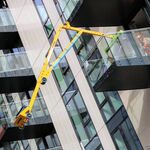crs1026
Superstar
The problem with Commuter Rail is it makes the false assumption that everyone works downtown. In North America this is becoming less and less common with decentralization. Instead of a hub and spoke system (with downtown being the hub) what is needed is a grid network. For example, the Skytrain extension to Langley will primarily serve those who work in Surrey.
Of course the other problem with commuter rail (at least the way GO has been implemented) is it is very car dependant, with the suburban stations having car parking cathedrals. As a result, Metrolinx has gained the dishonorable record of being the largest provider of free parking in North America. If they really cared about getting people out of cars, they would stop providing free parking stations and demolish their parkades in favour of Transit oriented development and high quality bus/LRT station transfers.
On the plus side, GO is making the transition from a bring-people-to-the-center system to a regional rail network that connects places other than downtown Toronto.
LRT's are not bad - they are a useful and affordable tool to get people to transition from an automobile built form to transit orientation. None of Calgary, Edmonton, Vancouver, Mississauga, Hamilton, Kitchener could have justified or afforded a full subway or rail commuter network as their entry into higher order transit. Nor would that investment have stretched across all the places they need to connect. Plus, there aren't railway lines every where one might build a transit line, and LRT is much easier to fit into the existing built form
Build a network of LRT, and the next generation will figure out where it needs and wants higher order transit.
- Paul




